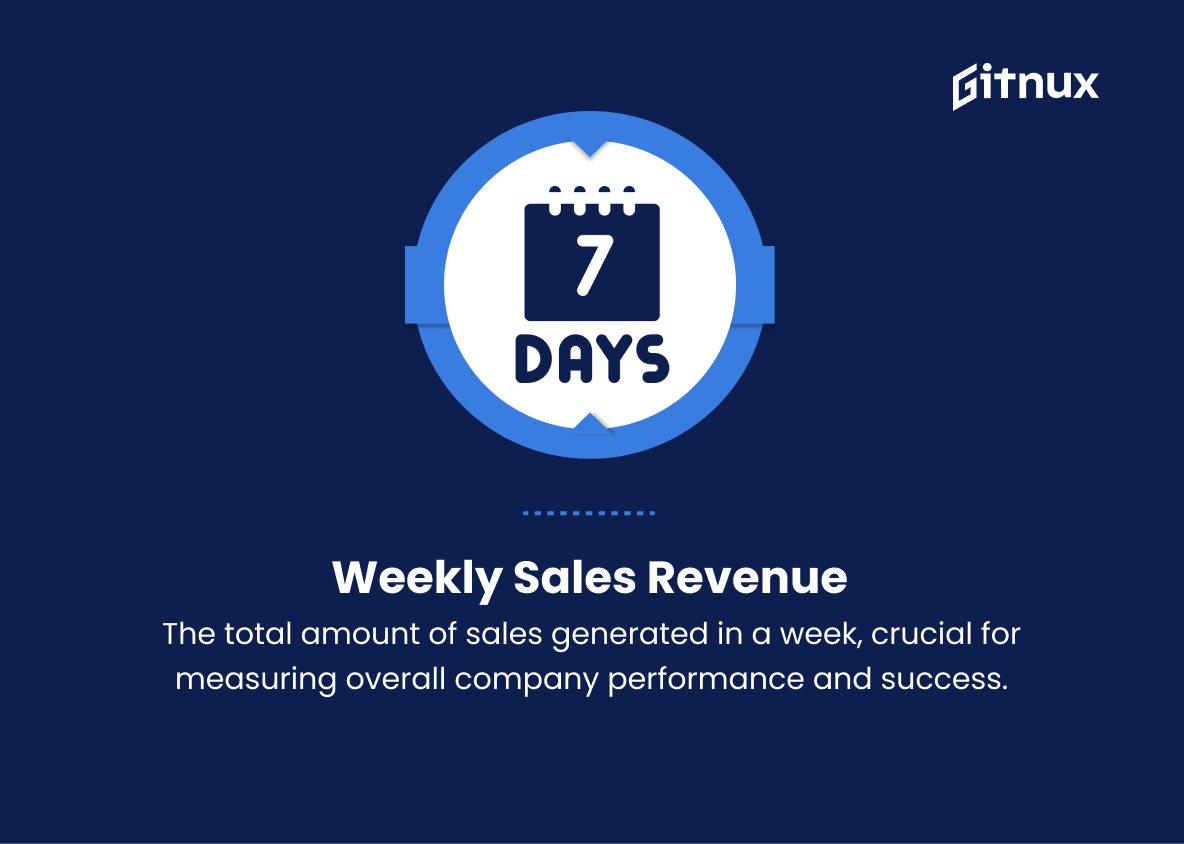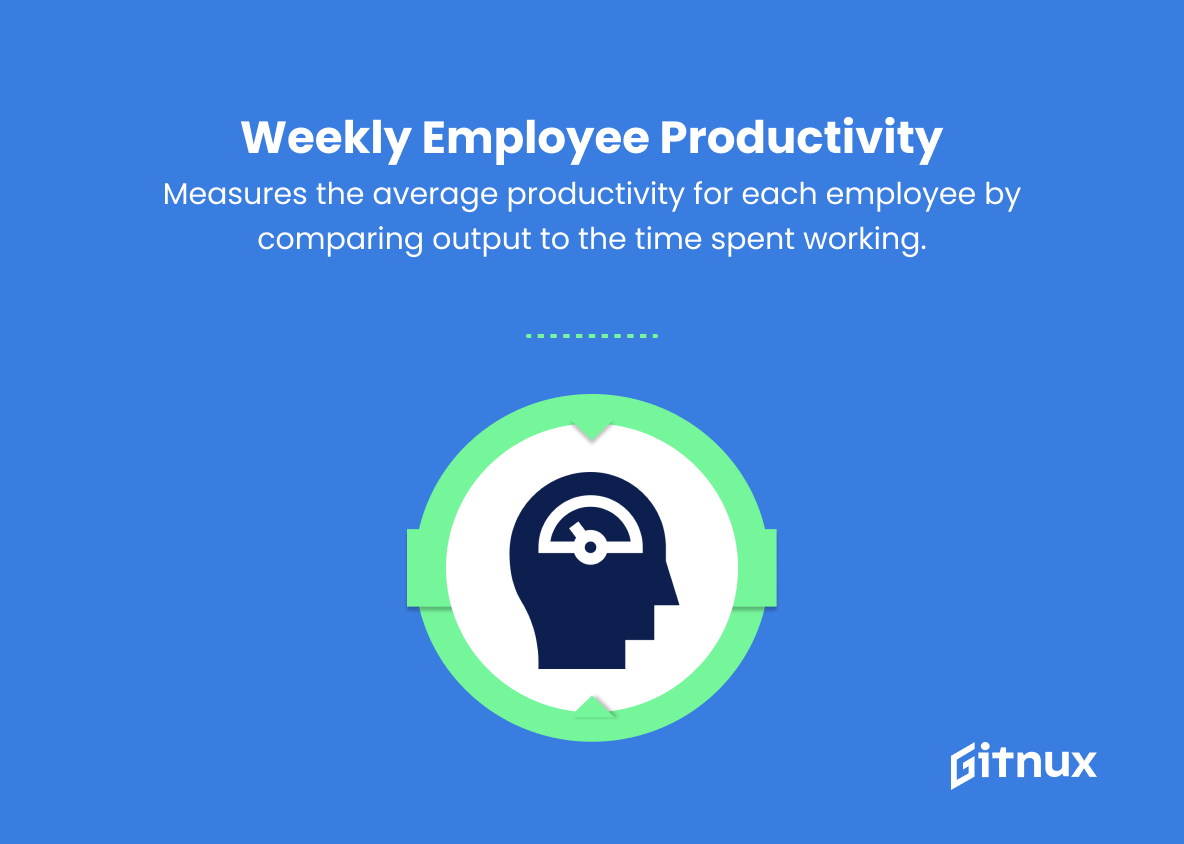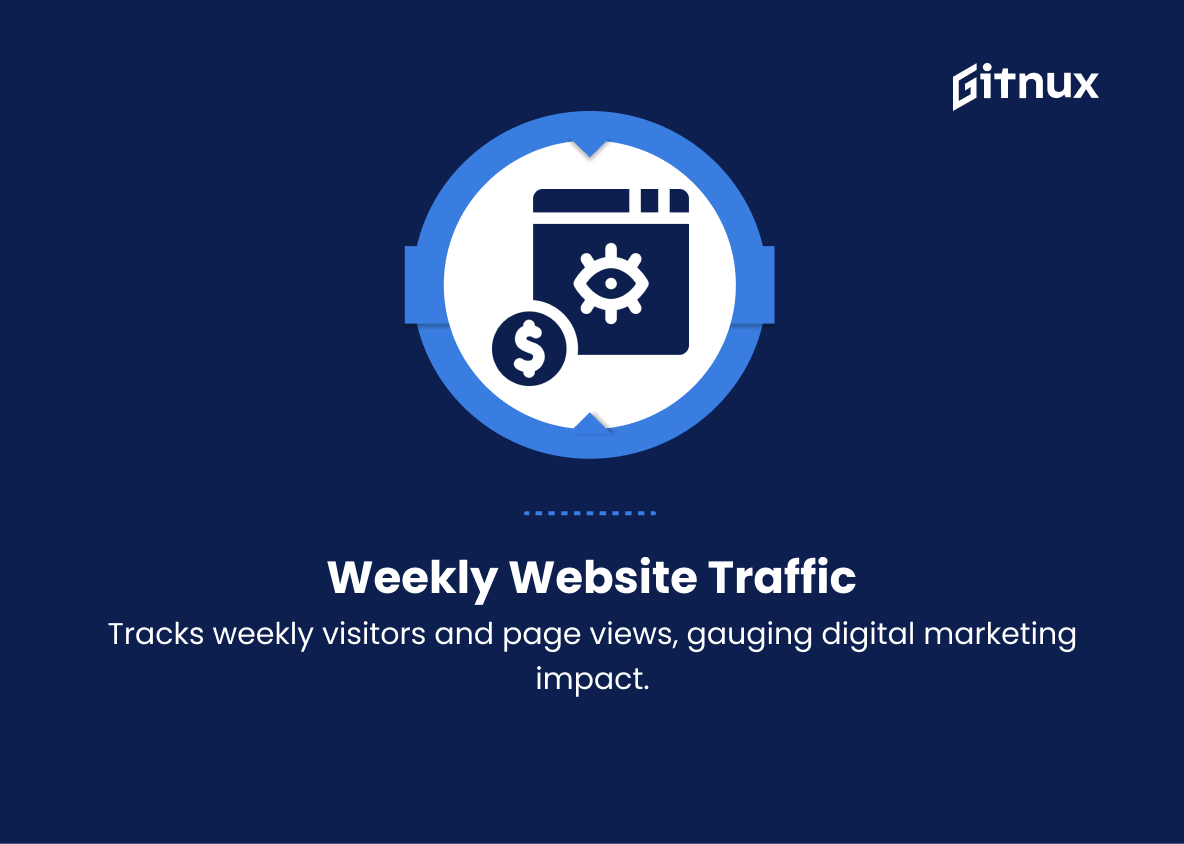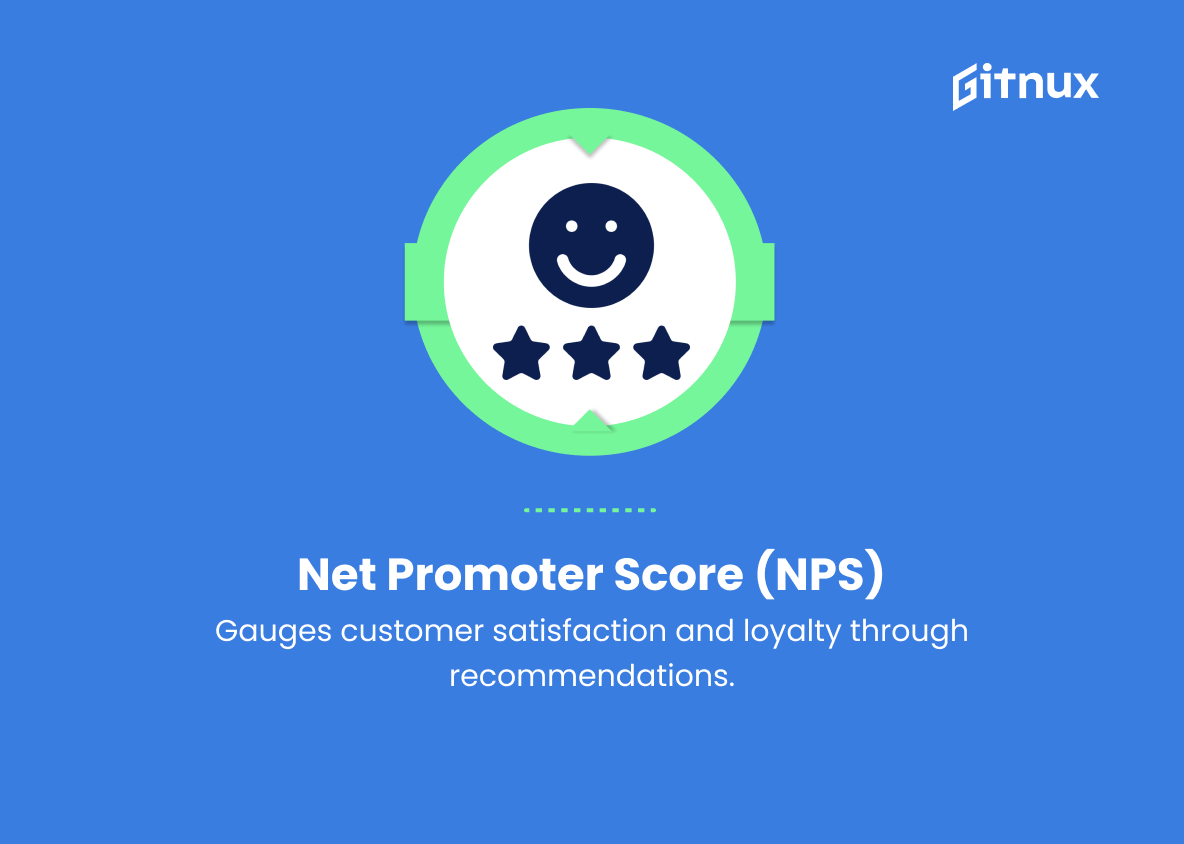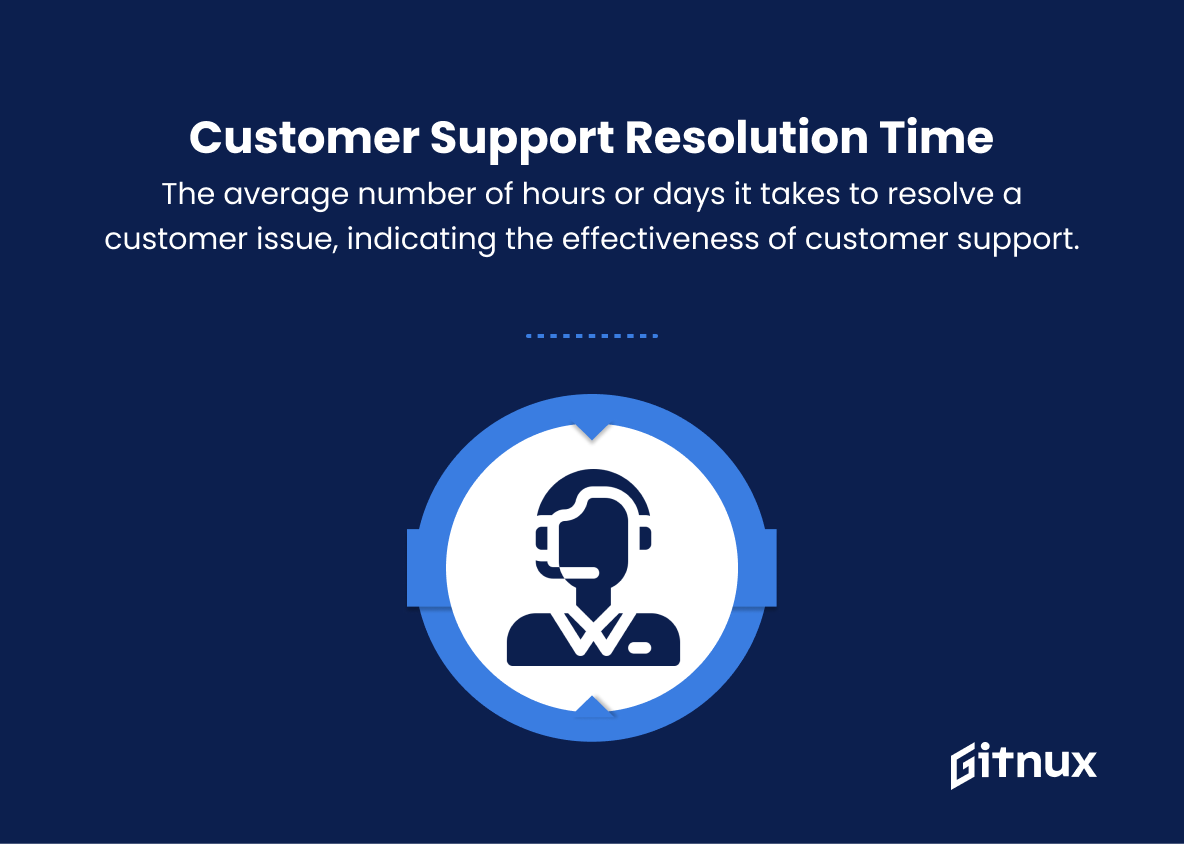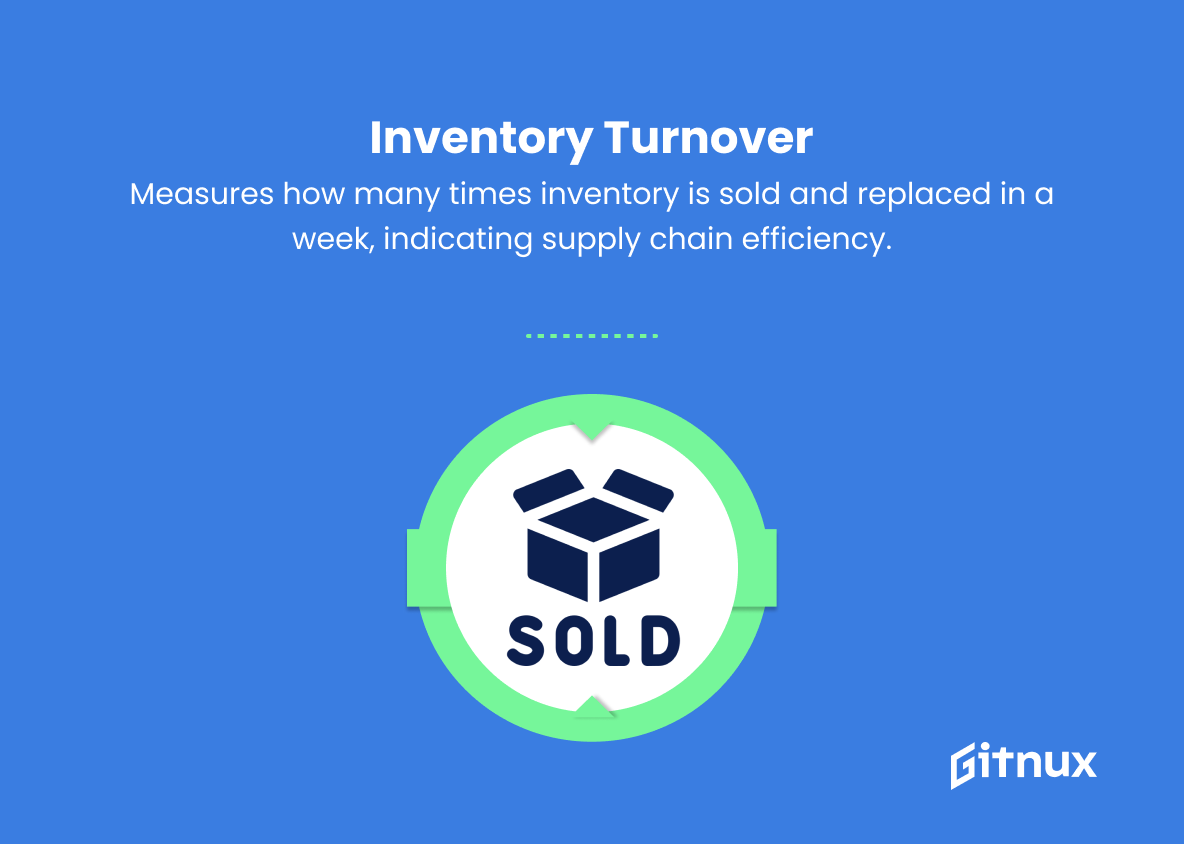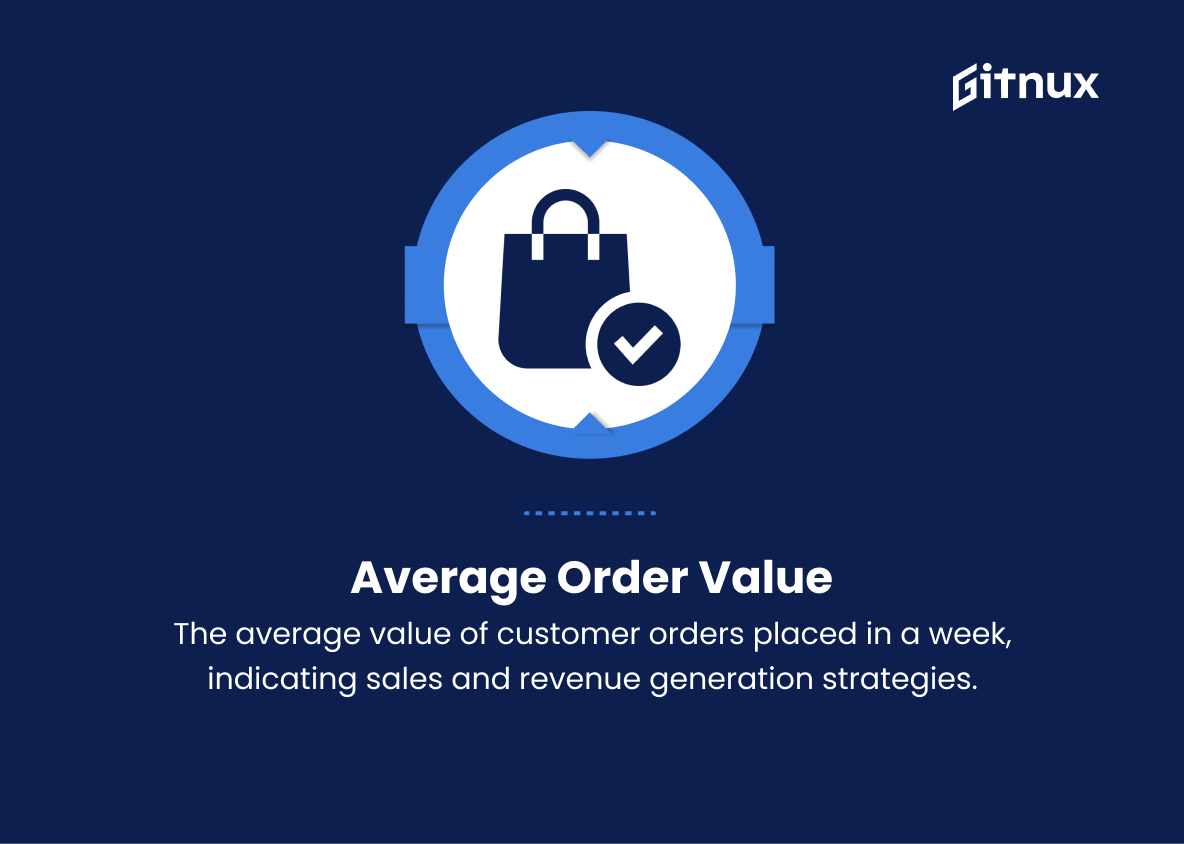In today’s fast-paced business environment, staying ahead of the curve requires constant evaluation and adaptation. To ensure continuous growth and optimized productivity, it’s essential to monitor Key Performance Indicators (KPIs) regularly. As a crucial tool for tracking progress towards strategic goals, KPIs serve as a compass that allows you to determine if your efforts are paying off or if your strategies need to be reevaluated.
In this week’s blog post, we delve into the importance of Weekly KPIs, breaking down their significance and guiding you through the process of selecting, monitoring, and acting on the most relevant indicators for your specific objectives. So, let’s embark on this insightful journey to unlock the full potential of your business with the power of Weekly KPIs.
Weekly KPIs You Should Know
1. Weekly Sales Revenue
The total amount of sales generated in a week, crucial for measuring overall company performance and success.
Conversion Rate is the percentage of leads that convert into actual sales deals2. Weekly Sales Volume
The total number of units or products sold in a week, allowing businesses to understand their market demands and how well they meet them.
3. New Leads per Week
The number of potential new customers who have shown interest in your products/services, helping businesses gauge marketing effectiveness and sales funnel performance.
4. Conversion Rate
The percentage of leads that convert into actual sales deals, showing how well a business can gain customers.
5. Customer Churn Rate
The percentage of customers who stop using a product/service, crucial for determining customer satisfaction and potential revenue loss.
6. Weekly Employee Productivity
Measures the average productivity for each employee by comparing output to the time spent working.
7. Weekly Website Traffic
The number of visitors and page views your website receives within a week, essential for understanding the effectiveness of digital marketing efforts.
8. Social Media Engagement
The total number of likes, shares, comments, and followers your business has on social media platforms, helping measure brand reach and awareness.
Net Promoter Score is a weekly measurement of how likely customers are to recommend your product or service to others9. Net Promoter Score (NPS)
A weekly measurement of how likely customers are to recommend your product or service to others, showing customer satisfaction and loyalty.
10. Customer Support Resolution Time
The average number of hours or days it takes to resolve a customer issue, indicating the effectiveness of customer support.
11. Weekly Ad Performance
The number of clicks, impressions, and conversions generated by advertising campaigns, measuring the success of marketing initiatives.
12. Inventory Turnover
The number of times inventory is sold and replaced during a week, reflecting how well a business manages stock and supply chain efficiency.
13. Average Order Value
The average value of each customer order placed in a week, giving insights into sales and revenue generation strategies.
14. Customer Acquisition Cost
The total marketing and sales expenses required to acquire a new customer divided by the number of new customers acquired during that week.
15. Project Progress
The percentage of project milestones or tasks completed within a week, which helps evaluate the team’s productivity, efficiency, and adherence to timelines.
Weekly KPIs Explained
Weekly Key Performance Indicators (KPIs) are essential for businesses to assess various aspects of their performance and growth. Weekly Sales Revenue and Weekly Sales Volume help in measuring overall company performance and understanding market demands. New Leads per Week and Conversion Rate serve as indicators for marketing effectiveness and customer acquisition capabilities.
Customer Churn Rate and Net Promoter Score (NPS) provide insights into customer satisfaction and loyalty, while Weekly Employee Productivity and Project Progress reveal the team’s efficiency and success in meeting deadlines. Analyzing Weekly Website Traffic, Social Media Engagement, and Weekly Ad Performance is crucial for evaluating digital marketing efforts and brand reach. Inventory Turnover and Average Order Value give an understanding of stock management and revenue generation strategies.
Lastly, Customer Acquisition Cost and Customer Support Resolution Time indicate the investment required for acquiring new customers and the efficiency of customer service processes. Altogether, these KPIs serve as vital metrics for businesses to monitor their growth, identify areas for improvement, and optimize their strategies.
Conclusion
In closing, consistently tracking and analyzing Weekly KPIs is absolutely crucial for the success of any business or organization. By doing so, we stay in touch with the current trends and challenges, make well-informed decisions, and set the right targets to ultimately drive growth and success.
The concept of Weekly KPIs may seem overwhelming at first, but as you identify and focus on the most relevant metrics, their importance becomes undeniably clear. So, invest the time and effort needed to understand, monitor, and optimize your Weekly KPIs – your future success will thank you for it.
